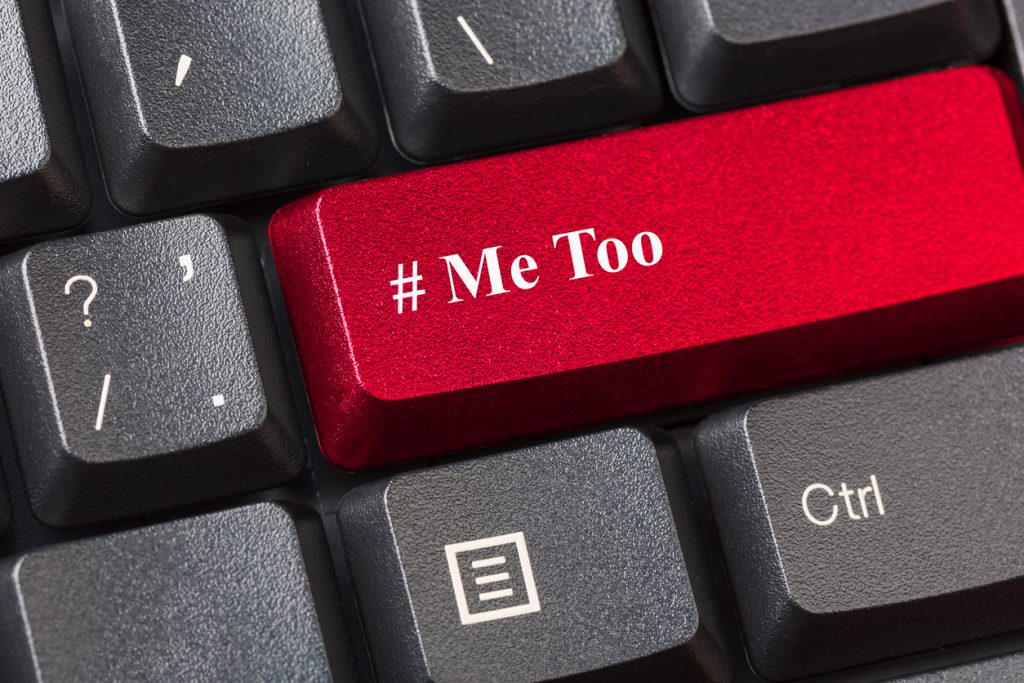The #MeToo movement shined a light on sexual harassment in the workplace, resulting in powerful individuals throughout every industry being exposed and convicted publicly. But the movement has not necessarily helped people understand that two behaviors—being aggressive and physical assault—are not the only unlawful actions when it comes to mistreatment in the workplace.
Across the workforce in every industry, women face verbal and non-physical harassment that is dramatically underreported. In response to this issue and the #MeToo movement, companies across the U.S. and Europe are beginning to offer products that use Artificial Intelligence (AI) to detect workplace discrimination and harassment in digital communications.
As part of her research at the Fox School, Leora Eisenstadt, associate professor of legal studies and director of the Center for Ethics, Diversity and Workplace Culture, examines the use of AI in equal employment opportunity compliance.
She considers whether eliminating human reporting requires a reconsideration of the U.S.’s approach to discrimination and harassment in a recent article, #MeTooBots and the AI Workplace, accepted for publication by the University of Pennsylvania Journal of Business Law. Eisenstadt will be presenting her research on Nov. 8 at 6:00 p.m. as part of the EQUITY NOW Speaker Series, hosted by the University of Connecticut School of Business.
“People are paying more attention to workplace culture due to #MeToo—myself included,” says Eisenstadt. “Managers who normally would have turned a blind eye to harassment are focusing on the issue. The #MeToo Movement is bringing about this change along with Millennial and Gen Zers entering the workforce and demanding better workplace cultures.”
Because we are living in a technologically-driven world, Eisenstadt emphasizes, harassment often shows up in digital communications such as email, text, Zoom and internal communication platforms. Online harassment makes it more difficult for employers to see and hear everything, which leads to underreporting. In order to deal with this, businesses are moving towards detection technology. But is that the right decision?
Some employers are using software known as #MeTooBots to detect inappropriate communication between employees. Employers are able to set the algorithm with parameters for what will be reported as harassment. Instead of employees having to come forward, the Bot can bring the issue of harassment directly to the managers’ attention.
#MeTooBots may have some benefits in reporting harassment, but the accuracy of the technology is questionable. Eisenstadt believes that fully relying on bots doesn’t address workplace culture issues at the core.
“Through my research, I critique the use of this technology and the dangers associated with it,” says Eisenstadt. “The AI algorithm may not catch nuances in human communication. It does not capture all the linguistic variations and vernaculars that are used, which can lead to individuals being wrongfully accused.”
According to Eisenstadt, #MeToo Bots may have an impact on both the employer and employee. For the employer, using this technology could increase liability. If the employer “knew or should have known” about co-worker harassment, it may be liable. Once an organization claims to be monitoring communications for potential harassment, it cannot deny that knowledge later.
For employees, there can be unintended legal consequences as a result of using AI-based harassment monitors like #MeTooBots. Title VII and other similar laws make it illegal to retaliate against victims who report harassment to leadership, which is a little more complicated when it comes to automatic, algorithm-based reporting.
A victim may not have full protection from the law if they do not actually come forward to complain. As a result of the AI’s involvement, the victim need not be a formal part of identifying harassment that they faced, which, in turn, could end up depriving them of legal protection against retaliation. Moreover, simply as a result of #MeTooBots doing what they are programmed to do, employees may lose their voice and agency, which has the potential to lead to further victim abuse.
“In order to limit instances of sexual harassment, businesses need to do the hard work of creating healthy open workplaces. This technology is an attempt at an easy solution to a larger, more complex problem,” says Eisenstadt. “People need to feel like they can come forward.”
Eisenstadt emphasizes that employers need to be trained on how to properly listen to complaints. It is crucial that they know what retaliation is, as well as human instinct. For instance, things like just moving an alleged victim’s office away from an abusive situation can be seen as retaliation.
“Workplace culture comes from the top,” says Eisenstadt. “Bosses need to repeatedly reiterate the workplace culture expectations so that all employees are able to identify what behaviors are outside the ‘norm.’ Once this idea is ingrained, individuals will start to identify with the culture being communicated.”
She notes that the approach companies have taken in the past related to sexual harassment was more litigation-focused, with employers wanting to avoid lawsuits and payouts. But Eisenstadt suggests leadership act more proactively.
“We have to begin emphasizing that sexual harassment is about undermining women’s power in the workplace. Real equality and ultimately productivity demand an honest approach to this problem and a commitment to do the hard work of creating healthy workplace cultures,” says Eisenstadt.
